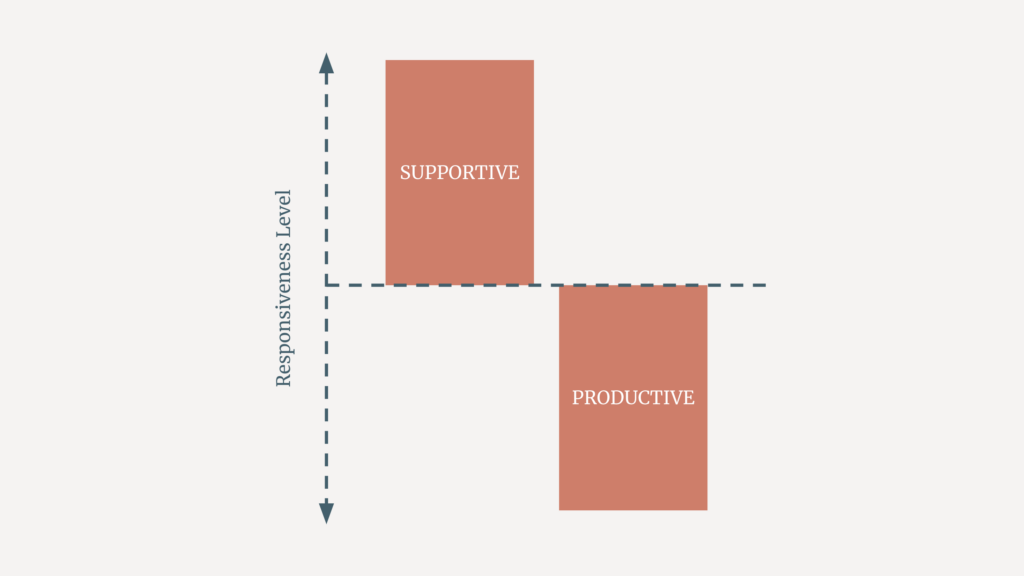So many things to do, so little time. When you juggle work, personal projects, and are hoping to have any sort of social life, managing your time can feel like an impossible endeavor.
There are many tips out there—the most common one being to focus on the most important task first—but few address the systemic complexities of managing your time and energy when you have a very long list of important and competing tasks as well as other people to take into account.
Option 1: You are focusing on a single task and ignoring all distractions and interruptions. You are getting a lot done, but your responsiveness suffers. People who are counting on you are stuck because they need your input.
Option 2: You make yourself as available as possible to other people and are extremely responsive when they need your input. They make faster progress with their work, but your own output suffers.

Both options are less than ideal. As a knowledge worker, you need to ensure you complete these important tasks while being responsive enough to support your collaborators in their work.
The challenge is in finding that delicate balance between optimizing your own output and sharing your input to enable your collaborators to progress. So what do we do? We try to multitask.
A mythical activity
In computing, context switching refers to the process of storing the current state for one task, so that this task can be paused and another task resumed. It’s basically what allows computers to multitask (fun fact: the word “multitask” was invented by IBM in 1965 to describe a computer capability. It was only later that we started using it for humans).
In the same way that context switching comes with a cost in performance for computers, multitasking has its cost for humans too. Research shows that constantly switching context between different tasks has a terrible effect on attention. We’re basically less focused and less performant when trying to do several things at the same time.
Psychiatrist Edward M. Hallowell even described multitasking as a “mythical activity in which people believe they can perform two or more tasks simultaneously as effectively as one.”
But very few people can afford to stay focused on one single task until it’s done. Emails need to be answered, customers need to be helped. So how can you avoid the terrible impact multitasking can have on your performance?
The mindful way
What I call mindful context switching is a strategic approach to task management that emphasizes the importance of staying focused on a single task while maintaining an acceptable level of responsiveness.
It involves defining your necessary level of responsiveness based on external demands, breaking tasks into achievable chunks that fit within these response intervals, and scheduling dedicated time slots for them.
It was inspired by the work of Brian Christian and Tom Griffiths, authors of Algorithms to Live By, who wrote: “You should try to stay on a single task as long as possible without decreasing your responsiveness below a minimum acceptable limit. Decide how responsive you need to be—and then, if you want to get things done, be no more responsive than that.”
The aim of mindful context switching is to boost your productivity and improve the quality of your output, all while maintaining healthy relationships at work and outside of work.
Ready to give it a try? It essentially boils down to five simple steps:
- Define your responsiveness: If you have high-value customers who expect to hear back from you in less than an hour, that’s how responsive you need to be. If you sell a SaaS product that’s not business-critical, maybe responding to emails once a day is fine. There is no fast-and-hard rule here, but you need to figure out what level of responsiveness will work for your business.
- Design manageable chunks of work: Now that you know how responsive you need to be, break down your tasks into manageable chunks that can be done between these response times. Each chunk needs to be realistic, with a beginning and an end. For example, if you need to write an article, one chunk could be to create the outline.
- Schedule dedicated time: That’s it for this one. Just put these chunks into your calendar.
- Communicate clearly: Let everyone you work with know that you won’t be able to respond during these deep work time slots. There are several ways to go about this. If you have a shared calendar, that’s fairly easy. When I was working at Google, I also saw people put it in their email signature or inside an email autoresponder if their response time was longer. Although it may feel weird at first, it’s usually best to overcommunicate.
- Revisit regularly: Don’t simply duplicate your time slots from one week to another. Reflect on what worked and what didn’t. Were the chunks actually manageable? Was your responsiveness appropriate? You can even proactively ask your teammates for feedback. Play with different configurations until you find the one that works for you.
That’s it! The first time around will take a bit of work, but mindful context switching will help you do better work, faster, and without alienating the people around you.
